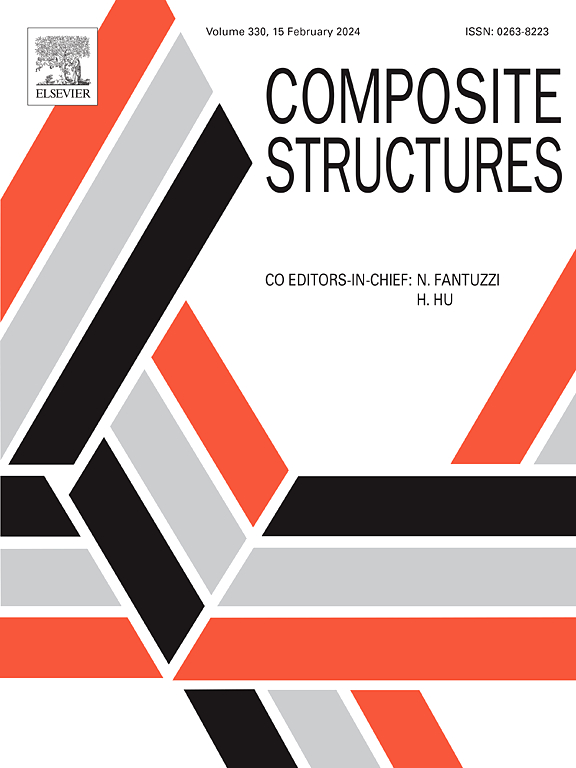Translaminar fracture toughness characterisation for a glass fibre/polyamide 6 laminated composite by a novel approach based on fictitious material concept
IF 6.3
2区 材料科学
Q1 MATERIALS SCIENCE, COMPOSITES
引用次数: 0
Abstract
This paper proposes a novel approach for the characterisation of the material fracture toughness associated with translaminar tensile failure, consisting in the application of the Fictitious Material Concept (FMC) by using the testing configuration of the Modified Two Parameter Model (MTPM). The main advantage of such an approach is to avoid the use of nonlinear fracture mechanics for material fracture toughness characterisation. The novel approach is applied to compute the translaminar fracture toughness of a unidirectional glass fibre (GF)/polyamide 6 (PA6) laminated composite. Moreover, the experimental campaign carried out is numerically simulated by means of a micromechanical finite element model, and the fracture toughness is computed by employing two different approaches, that is, the novel one and the MTPM. The present study proves, for the first time, that the Fictitious Material Concept can be applied by considering both experimental and numerical structural responses since it provides, in both cases, quite satisfactory accuracy in term of laminated composite fracture toughness. Therefore, the great advantage is that, when a validated numerical model is available, experimental campaigns may be avoided, saving time and money. Moreover, it is proved that the FMC can be used to investigate specimen size effect on fracture toughness.
基于虚构材料概念的新方法表征玻璃纤维/聚酰胺 6 层压复合材料的横向断裂韧性
本文提出了一种表征与层间拉伸破坏相关的材料断裂韧性的新方法,即通过使用修正双参数模型(MTPM)的测试配置,应用虚构材料概念(FMC)。这种方法的主要优点是避免使用非线性断裂力学进行材料断裂韧性表征。这种新方法被用于计算单向玻璃纤维(GF)/聚酰胺 6(PA6)层压复合材料的层间断裂韧性。此外,还通过微机械有限元模型对所进行的实验活动进行了数值模拟,并采用两种不同的方法(即新方法和 MTPM)计算了断裂韧性。本研究首次证明了 "虚构材料概念 "可以通过同时考虑实验和数值结构响应来应用,因为它在两种情况下都能提供令人满意的层状复合材料断裂韧性精度。因此,它的最大优势在于,如果有了经过验证的数值模型,就可以避免实验活动,从而节省时间和金钱。此外,FMC 还可用于研究试样尺寸对断裂韧性的影响。
本文章由计算机程序翻译,如有差异,请以英文原文为准。
求助全文
约1分钟内获得全文
求助全文
来源期刊

Composite Structures
工程技术-材料科学:复合
CiteScore
12.00
自引率
12.70%
发文量
1246
审稿时长
78 days
期刊介绍:
The past few decades have seen outstanding advances in the use of composite materials in structural applications. There can be little doubt that, within engineering circles, composites have revolutionised traditional design concepts and made possible an unparalleled range of new and exciting possibilities as viable materials for construction. Composite Structures, an International Journal, disseminates knowledge between users, manufacturers, designers and researchers involved in structures or structural components manufactured using composite materials.
The journal publishes papers which contribute to knowledge in the use of composite materials in engineering structures. Papers deal with design, research and development studies, experimental investigations, theoretical analysis and fabrication techniques relevant to the application of composites in load-bearing components for assemblies, ranging from individual components such as plates and shells to complete composite structures.
 求助内容:
求助内容: 应助结果提醒方式:
应助结果提醒方式:


